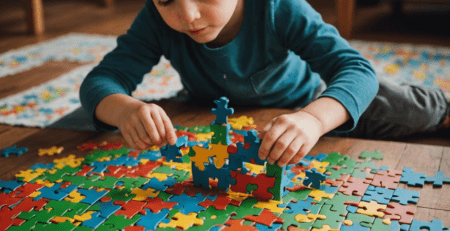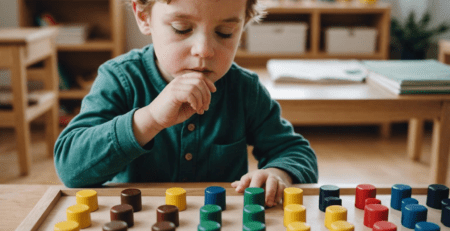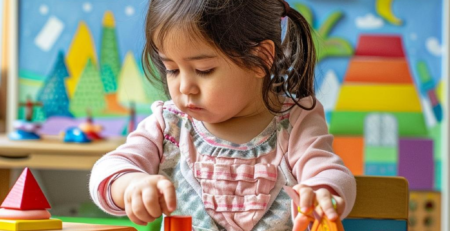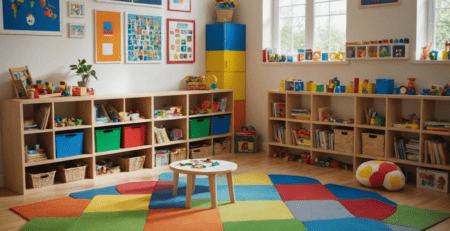
27
The Crucial Period: Language Development in Early Life
In the remarkable journey of human development, language acquisition stands as a pivotal milestone. The ability to comprehend and produce language is undoubtedly a skill that shapes how we interact with the world around us. However, there exists a critical period during which language development is most successful – a period that has captivated the curiosity of researchers and educators alike. In this article, we delve into the intriguing phenomenon of the language development critical period, exploring the intricacies of this window of opportunity and its profound impact on cognitive development.
Table of Contents
- Early Language Exposure and Acquisition
- The Critical Period Hypothesis
- Neurological Basis of Language Development
- Cognitive and Social Factors in Language Acquisition
- Implications for Language Learning and Education
- Q&A
- Key Takeaways
Early Language Exposure and Acquisition
Language development is a critical aspect of a child’s overall growth and cognitive development. The early years of a child’s life are crucial for language exposure and acquisition, as this is the time when they are most receptive to learning new languages and developing their communication skills. Research has shown that there is a critical period for language development, typically occurring between the ages of 0-7 years old, during which children are highly sensitive to language input and are able to acquire multiple languages with ease.
Exposure to multiple languages: Exposing children to multiple languages at an early age can significantly benefit their overall language development. This exposure can include speaking to the child in different languages, reading multilingual books, or engaging in activities that involve different languages. It has been found that children who are exposed to multiple languages from a young age have better cognitive abilities, improved problem-solving skills, and an enhanced understanding of different cultures.
Acquisition of language skills: During the critical period of language development, children have a natural ability to pick up new languages quickly and efficiently. It is important for parents and caregivers to provide children with ample opportunities to interact with different languages through social interactions, play, and educational activities. This exposure helps children develop strong language skills, including vocabulary, grammar, and pronunciation, which are essential for effective communication.
The Critical Period Hypothesis
One of the most intriguing concepts in the field of language development is the critical period hypothesis. This hypothesis suggests that there is a specific period in early childhood during which the human brain is most receptive to language acquisition. In other words, it proposes that there is a window of opportunity, after which it becomes much more challenging for individuals to learn a new language with native-like fluency.
Research has shown that the critical period for language acquisition typically ends around puberty, with varying degrees of flexibility depending on the individual. This has significant implications for language education, as it emphasizes the importance of early exposure to multiple languages. Understanding can help educators and parents make informed decisions about language learning strategies for children.
Neurological Basis of Language Development
Language development in children is a complex process that is heavily influenced by neurological factors. The critical period for language development is a well-documented phenomenon, indicating the importance of early exposure to language for proper neurodevelopment. During this critical period, the brain is particularly receptive to language input, and the neural circuitry for language acquisition is actively developing.
Neuroplasticity plays a crucial role in the language development. The brain’s ability to reorganize and adapt in response to new experiences and learning is fundamental to language acquisition. During the critical period, the brain’s plasticity allows for the formation of neural connections that facilitate language processing, comprehension, and production. Without adequate language input during this critical period, the brain may not fully develop the necessary neural circuitry for language, leading to potential language deficits later in life.
Furthermore, the Broca’s area and Wernicke’s area in the brain are essential for language processing and production. These regions are responsible for speech production and comprehension, respectively. The maturation and specialization of these language-specific areas during the critical period are crucial for the development of fluent language skills. Understanding the underscores the importance of early intervention and language exposure in children to optimize their language learning potential.
Cognitive and Social Factors in Language Acquisition
Language development in children is influenced by cognitive and social factors, and there is a critical period during which language acquisition occurs most readily. The critical period for language development is typically considered to be between infancy and early adolescence, during which the brain is most receptive to acquiring language skills. This period is crucial for the development of grammar, vocabulary, and language fluency, and children who miss out on this critical window may struggle with language acquisition later in life.
During the critical period, cognitive factors such as attention, memory, and problem-solving skills play a significant role in language acquisition. Children’s ability to attend to and process linguistic input, remember vocabulary and grammatical structures, and solve communication challenges are essential for language development. Social factors, such as interaction with caregivers, siblings, and peers, also play a crucial role in language acquisition. Children learn language through social interactions, imitation, and communication with others, which helps them to understand and produce language effectively.
The Role of Cognitive and Social Factors in Language Acquisition
- Cognitive Factors: Attention, memory, and problem-solving skills
- Social Factors: Interaction with caregivers, siblings, and peers
| Cognitive Factors | Social Factors |
|---|---|
| Attention | Interaction with caregivers |
| Memory | Interaction with siblings |
| Problem-solving skills | Interaction with peers |
Implications for Language Learning and Education
Understanding the critical period for language development has significant . The critical period, which refers to the window of time during which an individual’s brain is most receptive to language acquisition, has been a topic of great interest and importance in the field of linguistics and education. Research has shown that there is a limited window of opportunity for individuals to attain native-like proficiency in a second language, and that this window typically closes around puberty. This has led to important considerations in language education, particularly for second language learners.
For educators, recognizing the critical period for language development can help inform teaching strategies and curriculum design. It underscores the importance of early exposure to language learning, as well as the need for immersive, authentic language experiences. Additionally, understanding the critical period can help educators set realistic expectations for language learners and tailor instruction to best support students within the limitations of the critical period. By optimizing language learning opportunities within this critical period, educators can better support students in achieving proficiency and fluency in a second language.
Q&A
Q: What is the critical period for language development?
A: The critical period for language development is a window of time during which a child’s brain is most receptive to learning and acquiring language skills. This period typically occurs between birth and adolescence.
Q: Why is the critical period important?
A: The critical period is important because it is the optimal time for children to learn and develop language skills. Research has shown that the ability to learn a first language declines as individuals get older, making early language development critical for overall communication and cognitive development.
Q: What happens to language development after the critical period?
A: After the critical period, individuals may still be able to learn and acquire language skills, but it becomes more difficult and less natural. Language development may be slower and less comprehensive compared to those who learned language during the critical period.
Q: Are there any exceptions to the critical period for language development?
A: While the critical period is generally applicable to most individuals, there are rare cases where individuals are able to learn a new language later in life with fluency and ease. These exceptions are often attributed to unique cognitive abilities and the individual’s exposure to language learning.
Q: How can parents and educators support language development during the critical period?
A: Parents and educators can support language development during the critical period by providing a rich linguistic environment, engaging in interactive and stimulating communication with children, and exposing them to a variety of language experiences such as reading, storytelling, and multi-sensory language activities. This active involvement can help enrich the child’s language development during this critical time.
Key Takeaways
In conclusion, the critical period for language development is a fascinating and complex phenomenon that has captivated researchers and educators for decades. Understanding the role of this window of opportunity in shaping a child’s linguistic abilities is crucial for parents, teachers, and policymakers alike. By recognizing the significance of the critical period, we can better support and nurture language development in young children, setting them on a path towards effective communication and success in their future endeavors. As we continue to delve into the mysteries of language acquisition, let us remain open to the possibilities it offers and committed to providing the resources and guidance necessary to help every child reach their full linguistic potential. Thank you for taking the time to explore this captivating topic with us.










